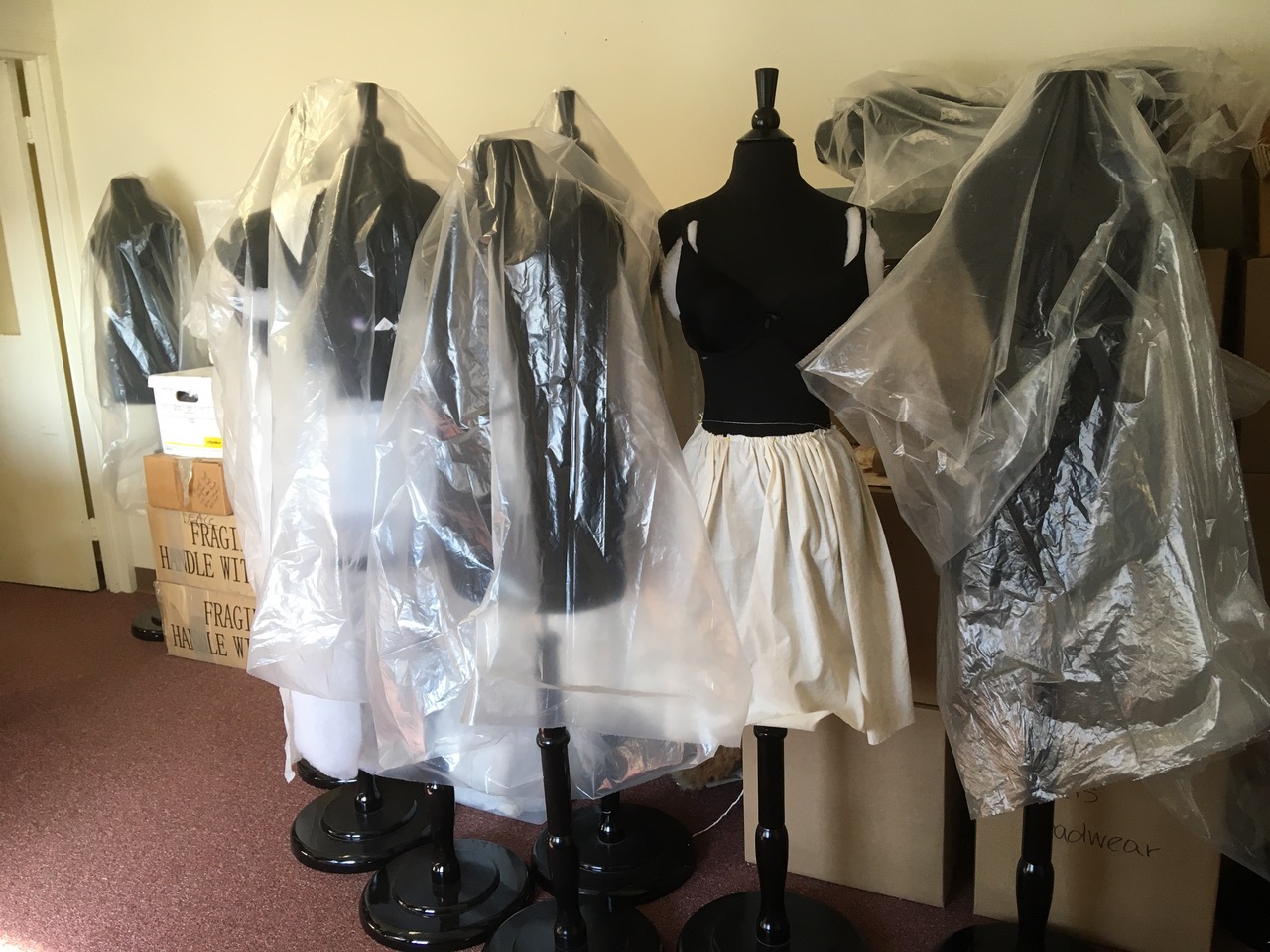
“Are words clothes or the putting off of clothes?” wrote the poet Hyam Plutzik (1911-1962). Finding my way between words and clothes—finding words that are equal to the putting off and on of clothes—is a challenge on ordinary days, which these are not. What are the words for clothes when getting dressed, like so many other habits, has changed—when daily life for some, as the fashion critic Robin Givhan has put it, involves being “turned into mere ectoplasm in pajamas”? And for others means not being able to wear adequate protective covering, at work in hospitals and elsewhere?
These days I am living apart from many of my clothes, including those I’ve saved of lost loved ones, having held onto them in some cases for decades. In my project for the Fashion Interpretations group I’m exploring the lives and afterlives of such personally archived articles of clothing. But for this blog I wanted to post images from an institutional archive, which I visited on March 2, a week before my social distancing project began. The Historical Costume and Textile Collection at the University of Connecticut was started in 1898, the year the university’s Home Economics Department was founded. Created through the work of professors and students, it grew eventually to over 8000 items, almost half of which were garments. Not too many years ago this corpus was described as the largest study collection of historical garments and textiles in New England. It even included a conservation lab. Today it is housed in a makeshift and temporary space and is being rescued, culled, and tended by the textile and costume historian Lynne Z. Bassett. I was introduced to it and her by the curator and art historian Alexis Boylan, a professor in the Art & Art History Department and the Africana Studies Institute at UConn; I traveled there with the historian of visual culture and of science Jennifer Tucker, who is my colleague at Wesleyan University and is expert, too, at bringing people together.
Bassett has been hired (one day a week) to sort through the collection, make decisions about what to deaccession, reconstruct donor records, impose some organization. As she escorted us through its several crowded rooms, I photographed mannequins and men’s and women’s hats; wedding dresses and “bodices that have lost their skirts”; Vogue magazines and Vogue patterns; woolen swimming costumes and an 18th-century military coat; purses from the 1840s and block-printed textiles from the 1930s. There are some designer fashions—including a rack and a half of clothes by Arnold Scaasi, which he donated. But most of what’s there are everyday clothes, which aren’t usually collected (because of their perceived lesser importance, and because they often fall apart from wear), which makes them rare. Living these distanced days with V., (who, when I showed her this mass of apparel and accessories, described it as stuff “that would have make the Cockettes scream”—with pleasure), I keep returning to my images of these crammed racks and drawers, promiscuous in their proximity to one another.


Love this article. Thank you. Similar collection to Smith College Historic Collection?
As well as being the acting curator of the UConn costume and textile collection, I have been cataloguing the Smith College historic costume collection for over five years now—so I can tell you that yes, the UConn collection is similar in some ways to the Smith collection, with its emphasis on everyday clothing. However, the Smith collection has a much greater emphasis on work clothing—like waitress uniforms and that sort of thing. And as the recipient of garments donated by wealthy Smith graduates or their heirs, the Smith collection also has more really high-end garments, too. But Smith only collects women’s clothing. The UConn collection is exceptional for its collection of men’s clothing, and there is some great children’s clothing, as well—so every class, every age group, and both male and female are represented.
Thank you for this piece- I hope I can get to visit the collection one day. Yes our relationship with dress and appearance has been changed but the pleasures of trying to find the words to describe the putting on and putting off of clothes has not diminished!